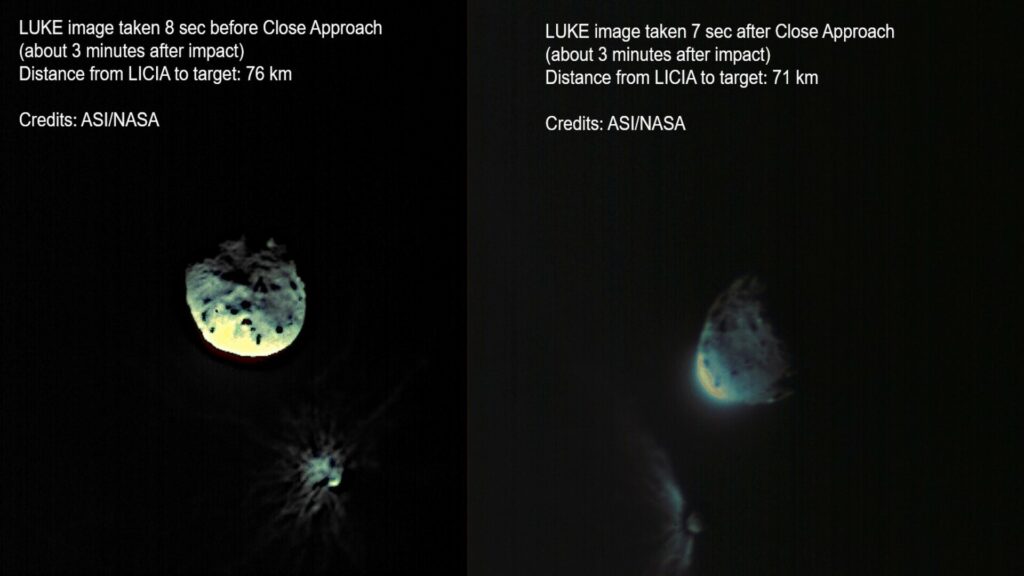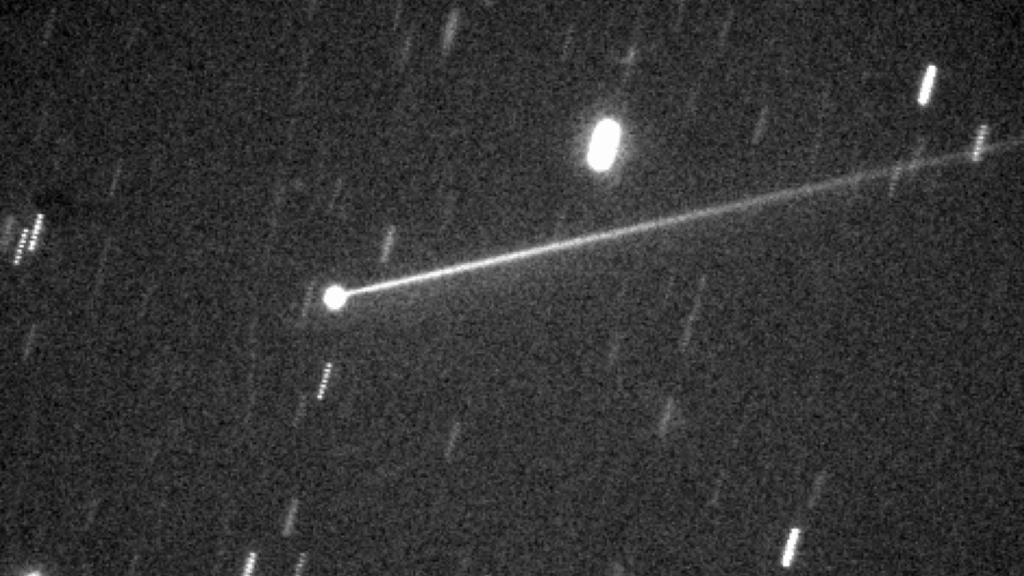The impact of the DART probe on the Dimorphos asteroid resulted in the release of at least a thousand tons of matter into space. This figure was announced at a press conference organized by the project participants.
Mass of matter lost by asteroid Dimorphos
The ram of Dimorphos (it is a satellite of the larger asteroid Didymos) took place on September 26, 2022. A few minutes after the impact, the Italian CubeSat LICIACube made a flyby of the asteroid. The pictures it took showed that the impact knocked out a large amount of matter from the Dimorphos’ surface. According to experts, during the subsequent analysis of CubeSat images, they even managed to detect the shadows cast by the fragments of Dimorphos on the surface of Didymos.

In addition, the Dimorphos received a bright comet-like tail that stretches for thousands of kilometers. Despite the fact that several months have passed since the impact, it can still be seen in telescope images.
But how much matter exactly did the Dimorphos lose as a result of the impact? The analysis carried out by the researchers showed that the weight of lost matter is from one thousand to ten thousand tons. For comparison, the mass of DART at the time of impact was about 570 kg, and the mass of the entire asteroid was five million tons. Thus, the Dimorphos was deprived of between 0.02% and 0.2% of its original mass as a result of the impact.
The efficiency of the space ram
But it should not be forgotten that the main goal of the DART mission was not to set a record for the mass of ejected matter, but to test the effectiveness of using the kinetic impact technique to deal with potentially dangerous celestial bodies.

To evaluate the results of the ram, scientists used an indicator called the “momentum exchange coefficient” (beta factor). If the collision with the asteroid occurs head-on without the formation of debris, the latter acquires the same momentum as the impactor had at the time of the accident (that is, the beta factor is equal to 1). The beta factor can be influenced by many characteristics: whether the spacecraft will collide with a smooth area or a large boulder, the internal structure of the asteroid and its chemical composition. In addition, it is significantly affected by debris flying into space, which gives the small body additional momentum.
According to the researchers, their estimate showed that the beta factor from the DART impact was 3.6. This means that the asteroid gained more than three times the momentum of a clean impact, and the impact debris affected it even more than the impactor itself. According to the materials of https://www.space.com

